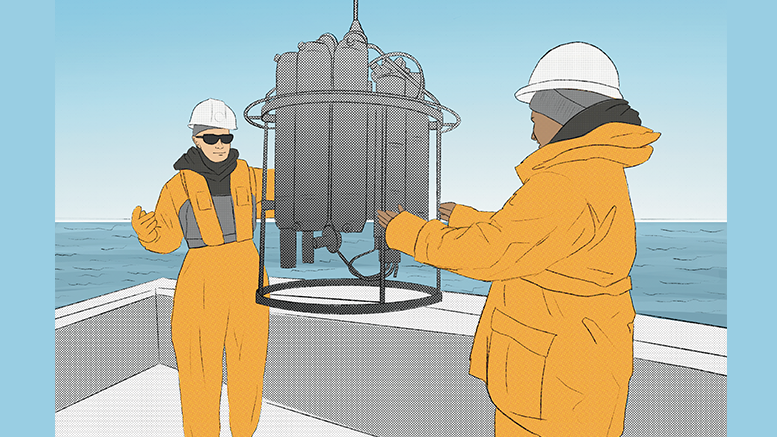Researcher examines increasing freshwater effects on the Arctic Ocean and climate.

As the Arctic warms at an unprecedented rate, it is important to understand how increased freshwater influx impacts the carbon dioxide exchange between the ocean and climate.
Kristina Brown is an assistant professor of environment and geography at the U of M.
Her journey into research began with an interest in the natural system of the Arctic Ocean, its ecosystem and how it is changing.
“I’ve always been drawn to ocean science in particular and the chemistry of the ocean,” she said. “The research that I do is working in the Arctic and spending time trying to understand how the ocean works and then how it might be changing as the climate in the Arctic continues to warm.”
Brown, a chemical oceanographer, researches how the ocean functions using various geochemical tracers to understand ocean processes.
Her current research examines how the ocean changes over time and how it behaves now.
“My primary research interest is looking at how the ocean plays a role in the climate system by helping to modulate the amount of carbon dioxide that’s in the atmosphere,” she explained.
Humans are increasing the amount of carbon dioxide in the atmosphere through activities like burning fossil fuels, farming livestock and cutting down forests.
“My research tries to [understand] how the ocean is taking up carbon dioxide from the atmosphere and how that might change in the future,” she said. “As the climate continues to warm, the Arctic in particular is warming at a rate of four times faster than the rest of the planet.”
Due to the warm temperatures that result from climate change, ice and snow in locations such as the Arctic have begun to melt, resulting in that melted freshwater flowing from the rivers and land to the ocean.
The increased freshwater entering the ocean has altered its chemistry in various ways, such as changing its carbon dioxide content.
Brown emphasized the larger implications of her work.
“The ocean plays a huge role in the climate system from a planetary perspective, but also it’s really important for communities in the north that live along the ocean, that live along the coastline,” she said.
“It’s really important to better understand how changes in river inputs and sea ice melt affect the ocean ecosystem so that they can better prepare for the changes that warming will bring to their lives, livelihoods and their cultural practices.”
During graduate school, Brown began working on Coast Guard vessels in the middle of the Arctic Ocean. Her goal was to understand how changes in sea ice affected the carbon dioxide exchange between the ocean and atmosphere.
As her research continued, she moved closer to land, exploring freshwater directly. Over the years, her work has shifted into collaboration with communities in the north who have first-hand experience of the changing ecosystem.
“I have gotten an opportunity to work closely with northern communities that live on the Arctic coastline and are there observing these changes every day,” she said.
“Inuit communities have lived in the north since time immemorial, so they have this long-term understanding of how things are changing [and] how the system might change in the future.”
She explained that her recent work allows her to bring traditional knowledge contexts into her observations, allowing her to better understand Arctic ecosystems.
“There’s so many things that we can learn by being open to many different ways of observing and ways of seeing the world,” she said. “By working with many different perspectives, we can really get a better understanding of the present natural world around us.”
By Divyata Gosai | Image by Teegan Gillich




